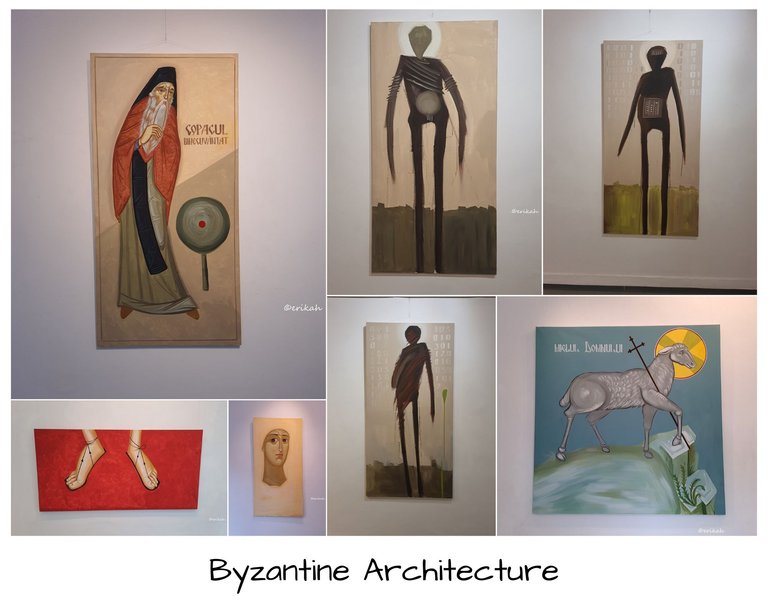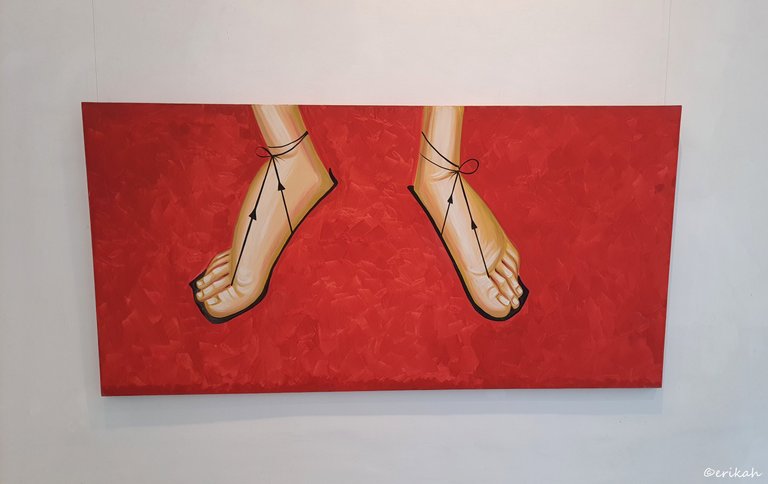Last week I went to an exhibition that was a bit out of my interest area, or I don't know yet how to appreciate it. It's an interesting thing as no one is born with knowledge, you learn over the years and develop certain skills. Appreciating art is also something you learn and develop on the go in my opinion.
So last week I went to the Art Nouveau gallery, which is always a nice thing to do as I never know what I am going to find there and based on my previous experience, there's always a nice surprise waiting for me.

When I got there, I saw it was an exhibition called Byzantine Architecture, by Mircea Albu. The title was a bit strange and based on it I was expecting real architecture. We all know the Byzantine architecture had a huge influence on medieval architecture.
Byzantine architecture is the architecture of the Byzantine Empire, or Eastern Roman Empire.
The Byzantine era is usually dated from 330 AD, when Constantine the Great established a new Roman capital in Byzantium, which became Constantinople, until the fall of the Byzantine Empire in 1453. However, there was initially no hard line between the Byzantine and Roman Empires, and early Byzantine architecture is stylistically and structurally distinguishable from earlier Roman architecture. This terminology was introduced by modern historians to designate the medieval Roman Empire as it evolved as a distinct artistic and cultural entity centered on the new capital of Constantinople (modern-day Istanbul) rather than the city of Rome and its environs. source

However, the exhibition was not about architecture. At first I thought these are religious icons. Are they? I have no idea to be honest as my religion doesn't have them, so my knowledge about icons is extremely limited.
None of the artworks had a title, so this was another guessing game for me and most likely for others too. The other thing that was surprising was the size of the paintings. You don't see paintings of this size these days as most of the artist choose the so called normal range to work with. Because of their size, there were only a few exhibited as the gallery is not huge. And I see the mistakes I mad with this photo as well :) Lesson learnt.

The Blessed Tree
No title here, but it it written on the painting. Interesting representation of the tree, but I liked the simplicity of the painting. Quite minimalist, I'd say, but that's not a problem, on the contrary.

This is where the puzzle game started. If you don't know what the title of the exhibition is, you think this is some kind of alien, but there were no aliens in the Byzantine times. The term appeared in the 20th century I believe.




These had some numbers and signs on them, but for me personally these were not of much helps as I'm still clueless. If you have any clue or know what we're seeing here, don't hesitate to let me know in a comment.

Another minimalist, sad or concerned face. The face expression is good though.

Harvesting grain by hand as that's how it was done at the beginning and grain was essential.

Lamb of God.

Byzantine sandals I suppose, which would be quite accurate.


At this point I think it's safe to say, your guess is as good as mine, so feel free to let me know what you think about these paintings.

If you're a newbie, you may want to check out these guides:
- Communities Explained - Newbie Guide
- Cross Posting And Reposting Explained, Using PeakD
- Hive Is Not For Me
- How To Pump Your Reputation Fast - Newbie Guide
- Tips And Tricks & Useful Hive Tools For Newbies
- More Useful Tools On Hive - Newbie Guide
- Community List And Why It Is Important To Post In The Right Community
- Witnesses And Proposals Explained - Newbie Guide
- To Stake, Or Not To Stake - Newbie Guide
- Tags And Tagging - Newbie Guide
- Newbie Expectations And Reality
